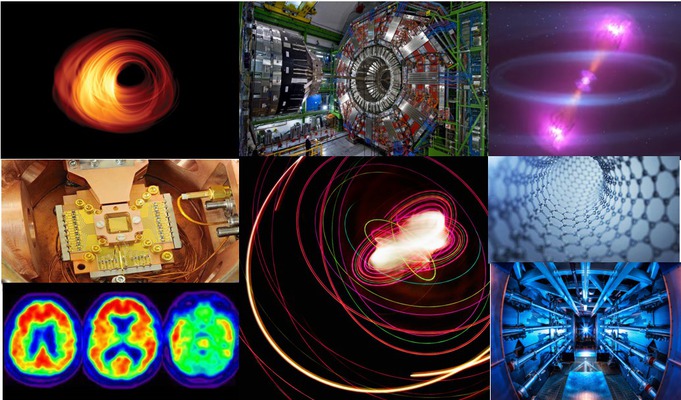BACK TO THE FUTURE OF PHYSICS
one small step towards the final frontiers
This is a scientific project aiming at introducing some concepts of Modern Physics. The branches of Modern Physics, such as Particle Physics, Nuclear Physics, Atomic Physics, Nanotechnology etc., are based on Quantum Mechanics, Special and General Relativity; topics often too difficult to grasp for students in secondary education. Nonetheless, the frontier in the physics research of today is in these fields. The goal of this project is therefore to stimulate our students’ curiosity for Modern Physics, to prepare them for future choices in their professional careers, or to just spark an everyday interest for current developments of the physics frontiers. In order to achieve this, the students will get some acquaintance with the topics of Modern Physics, working on a popular science level.
Students from different nationalities will form mixed groups. From a list of topics suggested by the teachers, each group will choose a topic on which they will perform a research project. They will summarise the results of their findings in a short report, and the reports of all topics will be gathered in an e-book.
The project is initiated by some activities to get to know each other. Students from different nationalities will not only produce a written personal presentation of each other, but also a short video documentary on their own school, town, region etc.
This project aims at broadening the student’s understanding of Modern Physics as well as improving their social and digital competences and language skills.

PROCEDURE
- Forming teams: The students can express their desire for national companions, while the international teams will be formed in a collaboration between the teachers in the two countries.
- Logo: The students are asked to present proposals for a project logo. The final logo will be selected by a voting process involving all of the students.
- Personal presentation: During a live-moment, the students will interview their foreign teammates. They will then perform a written personal presentation of each other and post this presentation on a team-Padlet.
- Video documentaries: The national teams will make a short video documentary of one of the following items: their school, their town, their region, their country, their traditions, etc.
- Choice of physics topics: The teachers will present a list of topics from which the students, in their international teams, will select one topic to discuss.
- Research: The students will search for information on their topic and present their findings in a short report, that should be published in a common e-book. The students will be responsible for the lay-out of their pages.
- Analysis: Once the e-book is completed, each team should analyse the work of another team. The Belgian team members (who are science-students) will analyse the physics and the Italian team members (who are language students) will analyse the use of English.
- Quiz: As the final physics activity, each team will create some quiz questions on the work of another team (yet a different team from the one whose work was analysed). Using all of these questions, the teachers will make a big quiz that will be used in both countries to test the students’ knowledge.